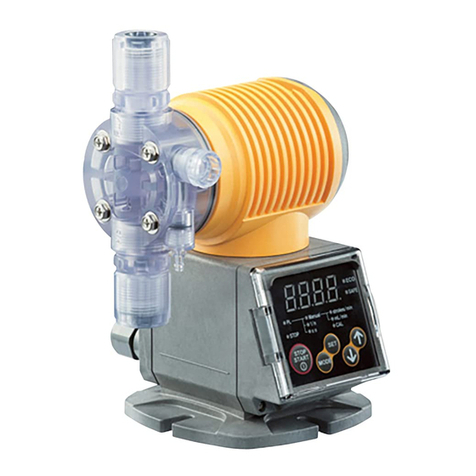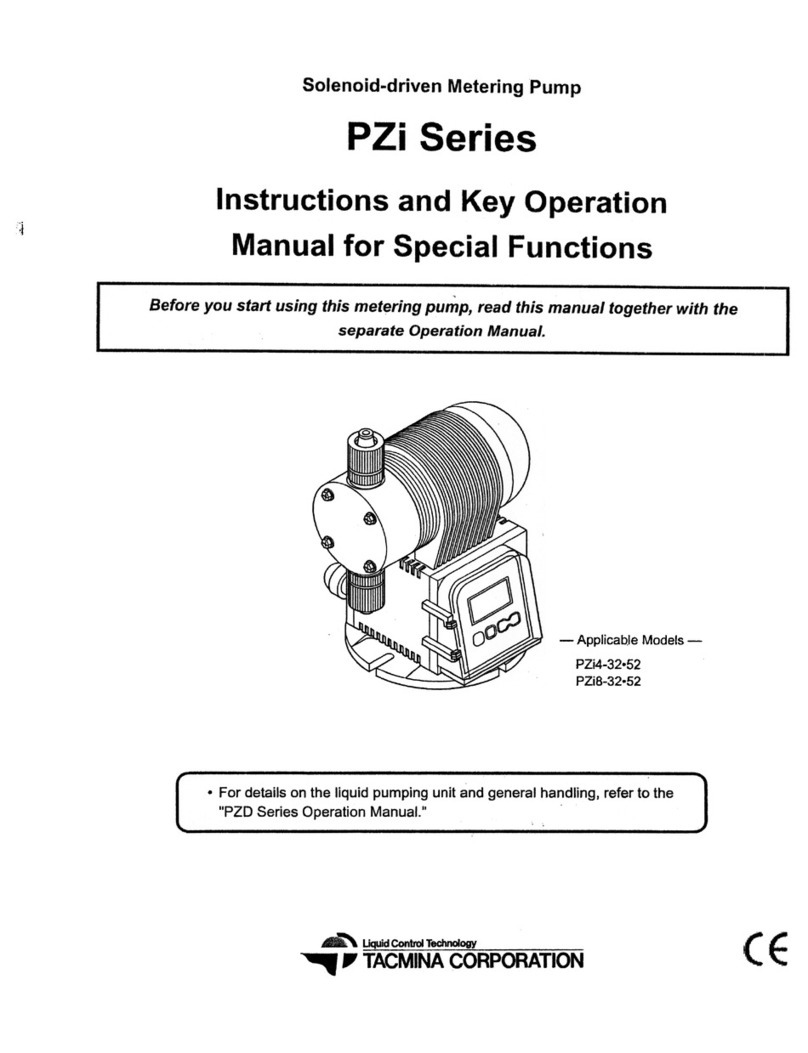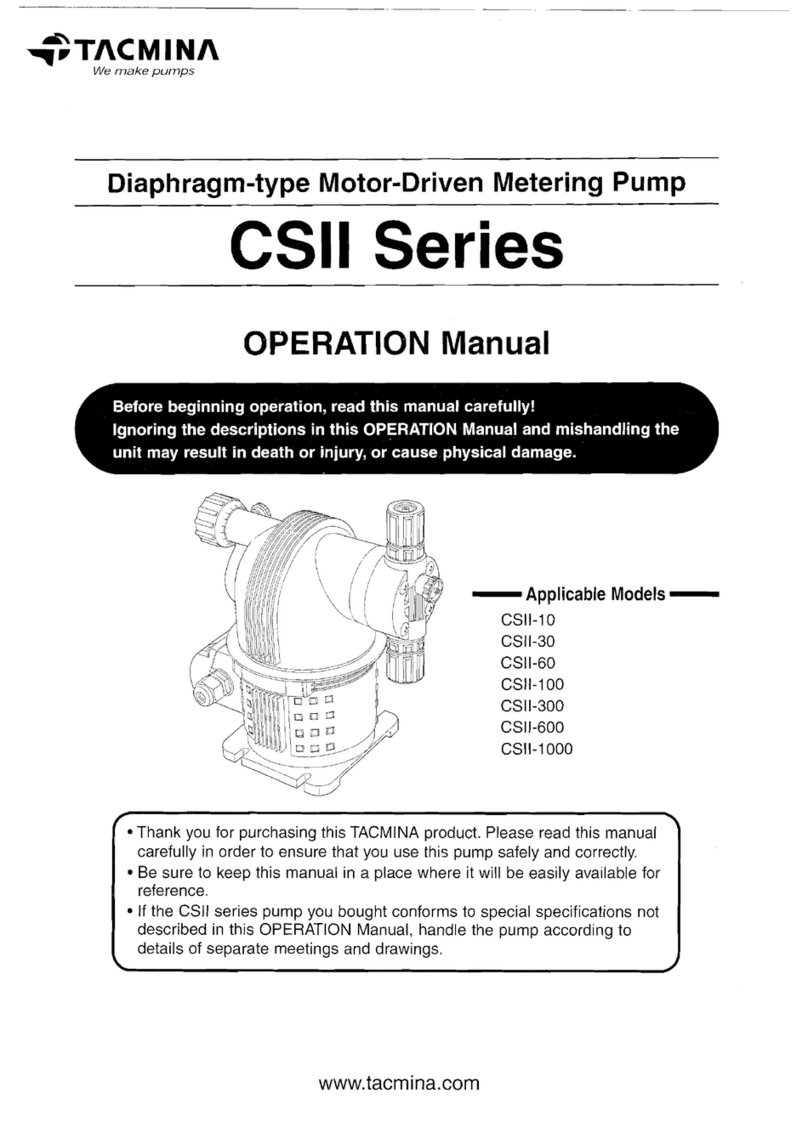Contents
—Read This First—
1 Using the Pump Safely............................ 1
1-1 How to Use This Manual ................... 1
1-2 Conditions of Use.............................. 1
1-3 Notes on Handling ............................ 2
2 Checking the Product .............................. 3
2-1 Accessory List................................... 3
—For Better Product Understanding—
3 Outline ..................................................... 4
4 Structure ................................................. 4
4-1 Drive Box Section ............................. 4
4-2 Pump Head with Relief Valve ............ 5
5 Operating Principle ................................. 6
6 Model Code ............................................. 7
7 Specifications (Standard) ........................ 9
8 Materials of Liquid-End Parts ................ 11
8-1 Pump Head Section ........................ 11
8-2 Anti-Siphon Check Valve ................. 12
9 Performance Curves ............................. 13
10 External Dimensions ............................. 15
—For Correct Handling—
11 Installation ............................................. 17
11-1 Place of Installation ...................... 17
11-2 Installing the Motor (w/out motor
specifications only) ....................... 18
11-3 Pulsation ....................................... 21
11-4 Hose-Type Piping ......................... 22
11-5 Installation with TACMINA Exclusive
Tank .............................................. 24
11-6 Flange-Type and Union-Type Piping
...................................................... 25
11-7 Concerning Slurry Transfer ........... 26
12 Electrical Wiring .................................... 27
12-1 Power Supply and P.E. Cable ....... 27
13 Operation .............................................. 28
13-1 Cautions for Use ........................... 28
13-2 Preparing for Operation ................ 30
13-3 Beginning Operation ..................... 31
13-4 Air Release SX(Y) DA-31.61.22.32
(VTC.VEC) .................................... 32
13-5 Adjusting the Injection Amount ..... 33
13-6 Disassembling the Flow Regulator
and Adjusting the Zero Point ........ 34
14 Maintenance ......................................... 34
14-1 Checking During Operation (Daily
Checking) ..................................... 35
14-2 Stopping Operation for an Extended
Period ........................................... 35
14-3 Preparing to Re-Start Operation ... 35
14-4 Lubrication .................................... 36
15 Replacement of Parts............................ 36
15-1 Replacing the Valve Seats and
Check Balls ................................... 36
15-2 Replacing the Pump Head ............ 39
15-3 Parts Replacement: Models
SXDA-31/61/12/22/32,
SYDA-31/61/12/32 ........................ 39
15-4 Parts Replacement: Models
SXDA-62/82/13/23/33/43,
SYDA-62/82/13/23/43 ................... 40
15-5 Parts Replacement: Models SXWA-
61/12/32, SYWA-31/61/12/32 ....... 41
15-6 Parts Replacement: Models
SXWA-62/82/13/23/33/43,
SYWA-62/82/13/23/43 .................. 42
15-7 Buffer Solution (Glycerin)
Injection Method ........................... 43
16 Troubleshooting ..................................... 44
—Customer Services—
17 Warranty ................................................ 45
18 Repair Service ...................................... 45
19 Getting in Touch .................................... 46
20 Consumables and Spare Parts ............. 47
20-1 Consumables ................................ 47
20-2 Parts Recommended to be
Kept at Hand ................................. 47
20-3 Spare Parts................................... 48
21 Options and Related Equipment ........... 48
22 Maintenance Service Tool List .............. 49
—Other Information—
23 Explanation of Terms ............................. 50
24 Maintenance Data ................................. 51
SXDAdata表1-もくじAdobePageMaker6.0J/PPC































